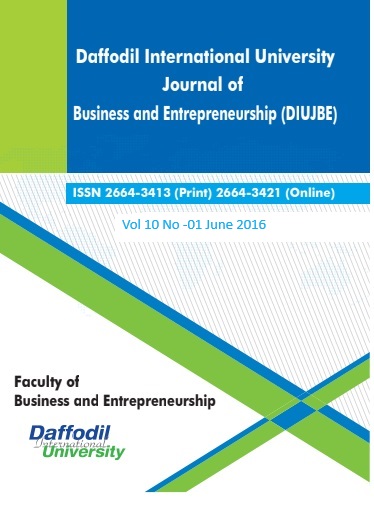Excess Reserve Management of Bangladesh Bank
DOI:
https://doi.org/10.36481/diujbe.v10i1.jaerv413Keywords:
Central Bank, Monetary Policy, Forecasting and Simulation, EL classification: E58, E52 and E47Abstract
Monetary accounts identity is taken into consideration to derive the excess reserves (ER) of deposit money banks (DMBs). DMBs Taka balance with Bangladesh Bank (BB) in reserve money (RM) minus cash reserve requirement (CRR) results ER in the central banks account. The shortfall of ER can also happen. ER is affected by autonomous and policy factors. Autonomous factor includes net foreign assets (NFA), net position of government and currency in circulation (CIC). The ER is managed through open market operations (OMOs), which is the policy factor. Without BBs intervention four days ER forecast is calculated in this paper to maintain the orderly situation in interest rate, exchange rate, inflation and output. Rise in call money appreciates the Taka against foreign currency and help to stiffen the inflation. Management of ER or Taka liquidity including sterilisation using BB Bill and reverse repo is crucial when NFA of RM increases. Using of principal asset mortgaging government securities to get liquidity through repo assured liquidity support facility (ALSF) is also important element for optimum ER management in Bangladesh. This paper addresses the issues relating to monetary and economic analysis, the two pillars of monetary policy for effective management of money multiplier (mm) and forecasting of ER. Quantity theory of money is analyzed to understand the money demand and supply relating to ER. The stability in mm is used as underlying factor to make relation among ER, interest rate, exchange rate, inflation and output.

